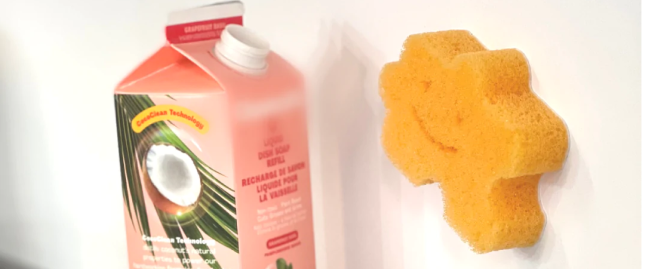"Is It Okay to Eat?” The Growing Trend of the Edible Insect Market

Foods made from 'insects', a concept many of us may be reluctant to try, are now emerging as new foods.
According to industry sources on the 11th, Lotte Confectionery plans to invest 10 billion won in Aspire Food Group, a company that manufactures alternative proteins using insects, to promote technological alliances.
Lotte Confectionery invested in Canada's Aspire Food Group in the form of a fund investment through the Korea Investment Noble Food New Technology Business Investment Association. Aspire Food Group was established in 2016 as a producer of protein powder products using crickets. It mainly manufactures and sells freeze-dried crickets, which are used as raw materials for pet food, cricket granola, and cricket flour. Aspire Food Group is a “food-tech company that developed an independent cricket breeding method and built an unmanned automatic production system using artificial intelligence (AI) and smart farm technology,” Lotte Confectionery states.
An official from Lotte Confectionery said, "We are very interested in the edible insect business, which is attracting attention as a future alternative protein with infinite potential for development as a food of the future. We will look forward to collaboration,” he said.
Previously, the Lotte Central Research Institute, which belongs to the same Lotte Group Food Headquarters, partnered up with a mealworm startup (a new venture company). In November of last year, a letter of intent for joint research and mutual cooperation (LOI) was signed with France’s Ynsect to secure product development technology using insect protein. Ynsect is the first company in the world to commercialize the world's first mass-automated smart factory for edible insect mealworms. They are building a mass breeding smart factory to supply protein sources for salmon feed in Europe and protein sources for food and livestock feed in the US.
Insect protein is not only used as an animal feed using protein extracted from edible insects, but it also has been used as a convenience food with high protein content. Various attempts are being made at home and abroad. Caterpillars, grasshoppers, crickets, and beetles are the most common edible insects. After reducing consumers' psychological rejection of insects, products in the form of powder or bars (a less insect-like shape) entered the market as snacks with high levels of nutrients and an appealing shape and design.

American food company EXO is selling cricket powder that can be used like wheat flour, and protein bars that mix chocolate chips with this powder. American food company Chapul is also selling cricket powder. It is recommended by Chapul to make smoothies with cricket powder or mix it with chocolate and fruit.
In Korea, last year, a meat processing company, S Food, introduced a protein bar made from brown mealworm on the crowdfunding platform Wadiz and succeeded in funding their project. Pulmuone Health Life is also planning to launch with the intention of selling Insect Nuggets, a pet snack made with insects as the main ingredient.
As we can see, the market for alternative proteins, including insects, is expected to grow steadily in the future. According to Grand View Research, the global insect protein market, which was worth $250 million in 2020, is expected to grow at a CAGR (Compound Annual Growth Rate) of 27.4% until 2028.
The growth of the alternative protein market, including insects, is the result of the spread of the value consumption trend called 'good consumption'. Current livestock breeding, for, say, pigs and cattle, emits copious amounts of greenhouse gases and is considered a significant contributor to climate change. This is because large-scale tropical deforestation is carried out for the cultivation of crops for livestock feed and cattle grazing, and carbon emissions from burping and farting of livestock have a large negative impact on the environment.
Some analyses cite inflation as a reason why alternative proteins are on the rise. Analysts have conjectured that the rapid growth of the alternative protein market is foreshadowed as all costs related to livestock production are skyrocketing.
Cha Jae-Heon, a researcher at DB Financial Investment, said, "All costs related to meat production, including feed, logistics, and processing costs, are rising. Problems such as greenhouse gas emissions, land and water abuse, and zoonotic diseases caused by livestock breeding can no longer be ignored. There is no situation,” he said.
However, there are obstacles that insect proteins must overcome. The point is that it is not easy to overcome the antipathy of consumers toward raw materials, and thus the business viability may deteriorate. For example, in 2016, CJ Cheil Jedang signed a memorandum of understanding (MOU) with the Korea Edible Insect Research Institute, and Daesang started to plan the business through its affiliates, but it is reported that no clear progress has been made so far.
Cho Mi-jin, a researcher at NH Investment & Securities, said, "There is still a perception that insects are disgusting foods....consumer preference is a task that needs to be addressed."
Source: Oh Jung-Min from Hankyung (March 11, 2022)
More Korean Innovation News

The Rise of Womance: Women Spearhead Korean Entertainment

A Korean Marriage Story

Jwipo, Your New Jerky Obsession

To Binge or not to Binge?

The K-pop Comeback: Returning from Military Service

Longcations: Escaping to Vietnam

Kkondaes at Work: GenZ and Millennials Battle at the Office

The American Bansang Experience


